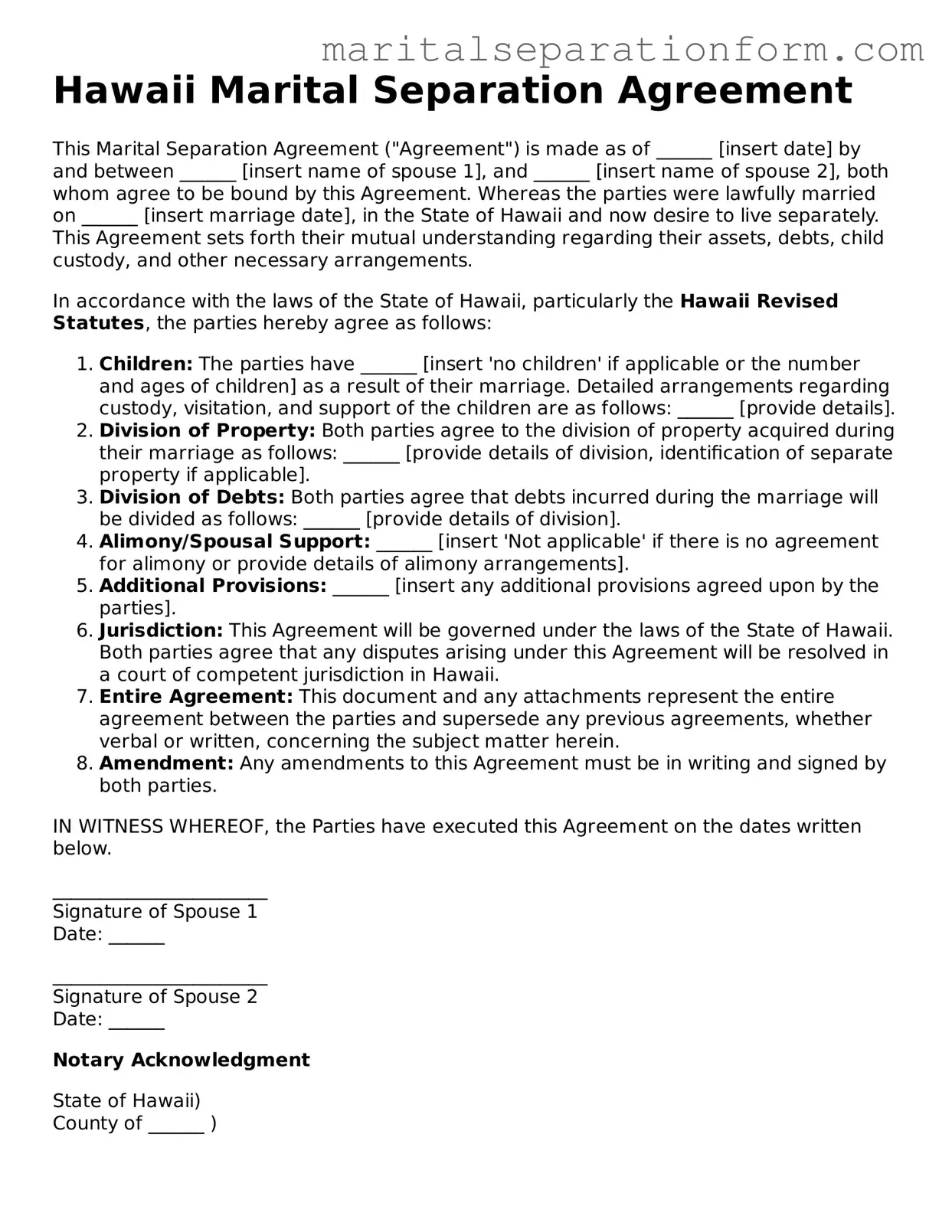What is a Hawaii Marital Separation Agreement?
A Hawaii Marital Separation Agreement is a legal document that married couples use when they decide to live apart without officially divorcing. It outlines how the couple will handle various matters such as property division, child custody and support, spousal support, and any other agreements they wish to document. Though they live separately, they remain legally married.
Why would a couple choose to create a Marital Separation Agreement instead of divorcing?
Couples might opt for a Marital Separation Agreement for various reasons, including financial benefits, religious beliefs, or to maintain insurance coverage. Some couples also consider it as a step toward reconciliation or as a more manageable approach to eventually divorcing.
Does a Marital Separation Agreement in Hawaii need to be filed with the court?
While it's not mandatory to file a Marital Separation Agreement with the court, doing so can make the agreement enforceable as a court order. This means that if one party fails to adhere to the agreement, the other party can seek legal recourse. Filing with the court can provide a level of legal security and clarity for both parties.
How can a couple create a Marital Separation Agreement in Hawaii?
To create a Marital Separation Agreement in Hawaii, both parties should discuss and agree upon the conditions of their separation, covering all important aspects such as division of property, debts, and parenting responsibilities if applicable. They can draft the agreement themselves, use an online template, or seek assistance from a legal professional. It's highly recommended to have a lawyer review the agreement to ensure it complies with Hawaii state laws and adequately protects both parties' interests.
Can a Marital Separation Agreement be changed once it's been made?
Yes, a Marital Separation Agreement can be modified, but both parties must agree to the changes. If the agreement has been filed with the court, any modifications must also be filed and approved by the court to be legally valid.
What happens if one party doesn't follow the Marital Separation Agreement?
If one party violates the terms of a Marital Separation Agreement that has been filed with the court, the other party can file a motion to enforce the agreement. The court can then order the violating party to comply and possibly face legal consequences, such as fines or other penalties.
Is a Marital Separation Agreement the same as a divorce in Hawaii?
No, a Marital Separation Agreement is not the same as a divorce. The agreement allows couples to live separately and outlines the terms of that separation, but they remain legally married. A divorce, on the other hand, legally ends a marriage.
Are there any specific requirements for a Marital Separation Agreement in Hawaii?
Yes, for a Marital Separation Agreement in Hawaii to be considered legitimate, it must be written, signed by both parties, and notarized. If filed with the court, it must also meet any specific requirements set by the court. Additionally, it should fairly represent both parties' interests, and both parties should fully understand and voluntarily agree to the terms. Consulting with a legal professional is advisable to ensure compliance with all legal standards and requirements.
